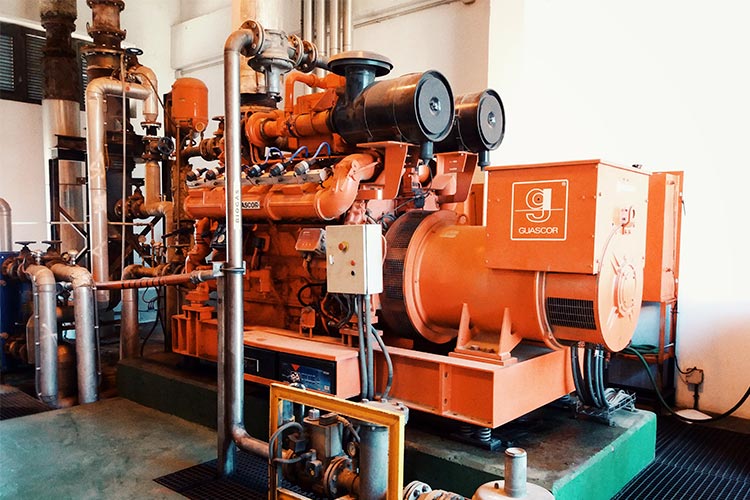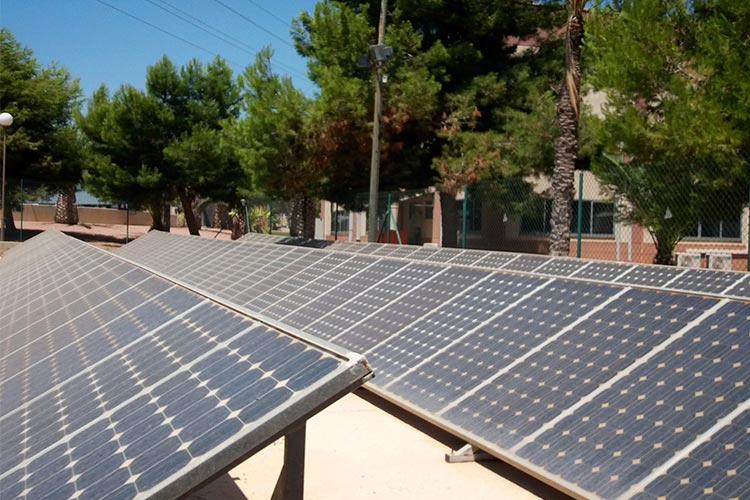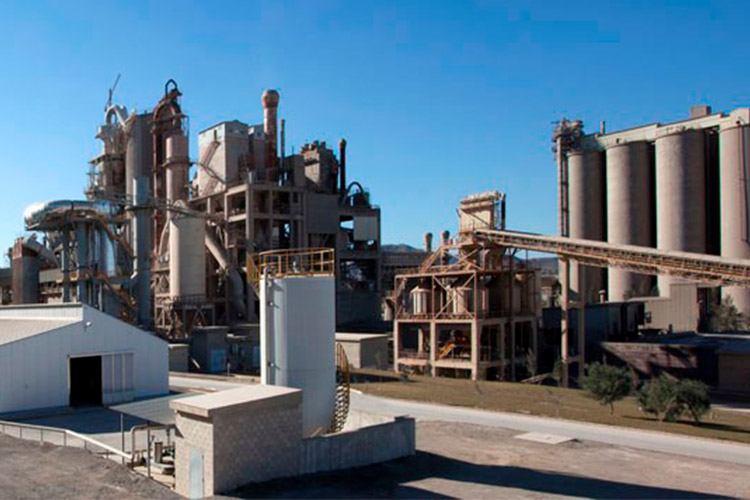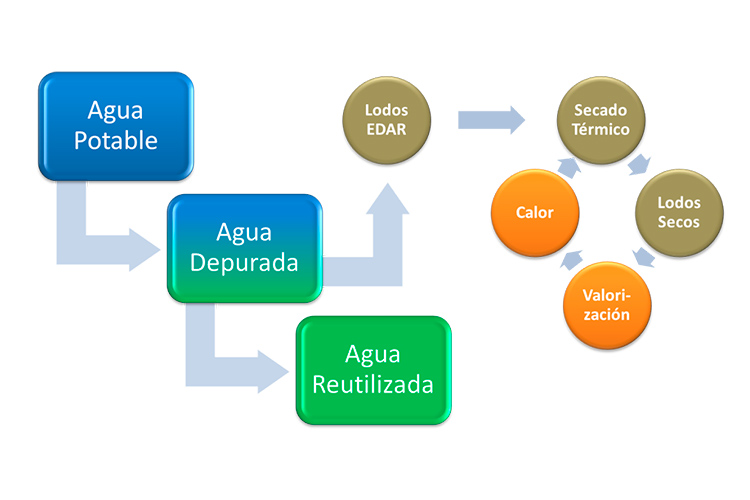A second life for water
Wastewater treatment is based on eliminating all residues that have accumulated in wastewater, returning it to the environment in optimum conditions, to protect aquatic ecosystems, avoid risks to public health, and obtain water that is suitable for reuse. This ensures the future of coming generations and the environment and achieves sustainable development. Aguas de Alicante manages the complete water cycle in the municipality of Alicante. To complete the water cycle and return water to the environment in the best conditions and even reuse it, wastewater treatment plants (WWTPs) treat the water so that it acquires the quality characteristics specified in current legislation. In Alicante municipality, there are two wastewater treatment plants.
| Reused water | 12.000.000 m3/year |
|---|---|
| Cogenerated energy | 2.500.000 KW/year |
| Agricultural sludge | 5.600 Tonnes / year |
| Thermal dried sludge | 22.000 Tonnes / year |
| Waste eliminated | 1.400 Tonnes / year |
The facilities that treat the wastewater in Alicante are the WWTPs of Rincón de León and Monte Orgegia.
The Rincón de León wastewater treatment plant serves most of the centre of Alicante and the town of Sant Vicent del Raspeig. It has a treatment capacity of 75,000 m3/day.
The other facility, the Monte Orgegia wastewater treatment plant, serves the northern part of Alicante municipality, an area of beaches, Villafranqueza and part of the municipalities of El Campello, San Juan de Alicante and Mutxamel. It has a capacity of 60,000 m3/day.
Both are standard treatment plants that rely on activated sludge and anaerobic digestion, with two lines of water treatment.
Relevant data for 2018 for both WWTPs:
| Population equivalent supplied | 545.000 inhabitants |
|---|---|
| Total wastewater treated | 28.000.000 m3 |
-
Cogeneration (Rincón de León)
As a result of sludge fermentation, biogas is generated, which is mainly comprised of methane. This is recycled and transformed to a generator of energy, which is used to operate part of the wastewater treatment plant. At the Rincón de León WWTP, a total of 2,500,000 kWh are cogenerated annually, which covers approximately 25% of the plant's energy needs.

-
Photovoltaic energy (Rincón de León)
A total of 37,000 kWh are produced annually via the solar panels installed in the plant. This is a small fraction of the total energy consumed in the WWTP.

-
Residues generated in the wastewater treatment process
The residues generated in the first wastewater treatment process are: solid urban waste of varying sizes, sands and fats. All of these are processed according to current legislation on waste by authorised managers and are transported to the corresponding waste treatment plants.
In addition, other waste is generated (packaging, plastics, etc.) in the process and maintenance operations. This waste is treated by authorised managers according to current waste legislation.
-
Sludge recovery
Before sludge is removed, it must be treated to reduce its fermentation capacity and adapted so that it can be reused. In addition, its volume must be reduced for transport.
In the anaerobic digestion process, organic matter is converted into methane and carbon dioxide in two stages. The sludge that comes out of the digesters then passes through a dewatering process to eliminate as much water as possible.
Once dewatered, the appearance of the sludge and its properties are similar to those of organic fertiliser, in whose production it is currently used.
The biogas that is obtained has a methane content in the order of 65% approximately, and can be used in electrical energy production.
Sludge from wastewater treatment is used. Its main applications are heat recovery and agricultural application as organic fertiliser.
The volumes of sludge applied are listed below, according to use:
- Total sludge for heat recovery: 22,000,000 kg.
- Total sludge for use in agriculture (kg): 5,600,000 kg.
Heat recovery from sludge extracted in the wastewater treatment process should be highlighted. It occurs in the thermal drying of the sludge.
The sludge drying plant is located within the premises of the Cemex cement factory in Alicante. There are two parallel lines of treatment via a drying system that is based on circulating hot air through the sludge so that its water content evaporates and is subsequently condensed.

Functioning of the drier tunnels:
The volume of dry sludge obtained is transported to the cement production furnace where it is used as a fuel. Thus it becomes a sustainable alternative to the use of fossil fuels such as coal. Residual heat from this furnace heats the water used to dry the sludge. Hence the environmental importance of the treatment system in this pioneering facility in Spain: it is energy sustainable, as it does not require non-renewable sources of energy (fuel oil, natural gas, coal, etc.), and the thermal energy of the residue is recovered.
Thus, the wastewater treatment cycle is closed by self-management and subsequent recovery of the main residue from the wastewater treatment process.

Drinking water
Treated water
Reused water
WWTP sludge
Thermal drying
Heat
Dried sludge
Recovery
